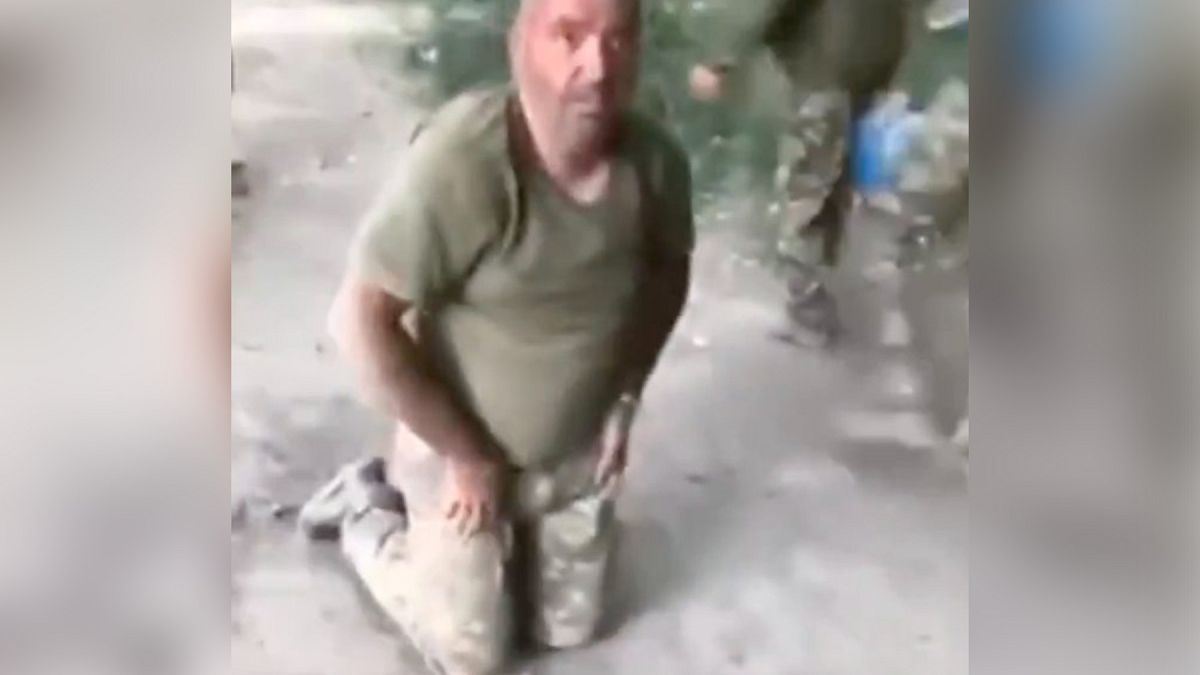“József Sebestyén was beaten to death by people called recruiters during forced conscription.”
For almost a week, that’s the line Hungary’s Prime Minister Viktor Orbán has been repeating on almost platform.
This has been backed up by pro-government media outlets, with their constant stream of criticism of Ukraine and President Volodymyr Zelenskyy’s leadership, trying to gather evidence to support the “Hungarian hating” narrative.
On Friday, the news spread like wildfire on government-connected portals that the pathologist who performed the autopsy on Joseph Sebestyén had been blackmailed by Ukrainian authorities.
First, Index reported that forensic pathologist Joszip Akar had falsified the autopsy report because his son had been captured by recruiting officers shortly before and demanded it in exchange for his release.
It is striking that the article does not name the source of the information, only stating repeatedly that it came from a “source in Berehovo.”
Coroner’s verdict: heart attack
However, a Euronews crew managed to interview a Hungarian nurse in Transcarpathia who was willing to go on the record that Sebestyen had not been beaten to death.
Zoltán Razsó has spent 27 months at the front, served with Sándor Fegyir, who was appointed ambassador to Budapest, and survived the bloodshed in Bakhmut.
He saw Sebestyén walking in the street when he was reportedly in a coma in Budapest and met him later in hospital. Specifically, in the mental hospital where he was transferred to after he appeared disturbed and was talking incoherently.
According to Razsó, he was working in ward four when József Sebestyén died on ward two. He asked his colleagues what had happened to the man. They told him that without any serious warning signs, his heart had stopped and he had died in the bathroom.
Razsó knew his colleague, the coroner, to be a reliable man, and he had found that a blood clot which started in Sebestyén’s leg had lodged in the arteries around his heart, killing him.
But Razsó continued to ask questions of other colleagues. At the time, several confirmed that they had met Sebestyén in two different wards and had seen no signs of a beating, even though his body had been examined several times.
“Bruises and contusions are usually recorded,” the veteran nurse told Euronews.
This does not mean, of course, that the videos circulating on the internet are fake. But the retired soldier said that it was common practice to bundle people into buses and “teach them a lesson” if they tried to avoid conscription.
They usually do not go to the military headquarters to update their data, despite a clear obligation to do so and repeated warnings.
Resistance is punished
At this point it is worth noting that Russia launched a full-scale invasion of Ukraine on 24 February 2022.
In the last three and a half years, even the most conservative estimate is that 170,000 Ukrainians have died in the fighting. This means that everyone has a relative, or at least a classmate, who died on the front.
The defence of the nation has become a personal matter, so it is no wonder that many people do not look kindly upon attempts by some to escape conscription.
And if a soldier who narrowly survived a missile strike is serving in the Territorial Recruitment Centre (TCK), he is likely to feel that “someone else has to go now.”
There are many of videos on the internet of recruiters treating people roughly, but they are mostly people who have refused to enlist. In almost every country in the world, this is indeed illegal during a war.
One of the most popular Hungarian-born bloggers in Transcarpathia, Sándor Lengyák, who has interviewed countless soldiers since the outbreak of the war, accepted our interview request.
He has never seen anyone forcibly removed from Uzhhorod, but admitted that outside Transcarpathia, such as in Odesa, “busification” is commonplace.
“However, the officers treat Roma and Hungarians in exactly the same way as Ukrainians,” Lengyak said.
We spoke to dozens of Hungarians from Uzhhorod to Solyvka. They all told us that even the anti-Ukrainian stance of the Budapest leadership did not provoke the Hungarian and Ukrainian people in Transcarpathia to start fighting each other.
The Hungarian minority is as safe as it was at the beginning of the war, they said.

